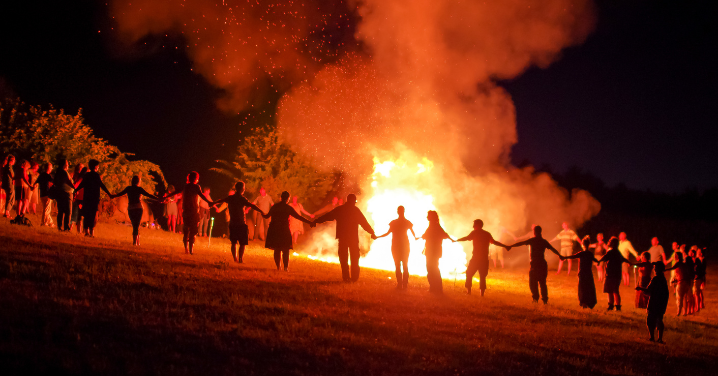
Cape Town’s got one of those reputations that walks into a room before it does. You hear “Cape Town” and your brain immediately paints a picture: sun setting behind Table Mountain, someone swirling a glass of red wine in Constantia, a penguin waddling past at Boulders Beach like it’s late for a meeting. It’s the poster child of South African tourism—the polished, sea-facing darling of travel brochures and Instagram feeds. But here’s the thing: Cape Town wasn’t always this glossy, and its beginning wasn’t exactly graceful. It’s not like the mountain waved a flag and shouted, “Build a city here!” What happened was far messier and far more interesting.
If you strip it right back, Cape Town’s entire existence began because ships couldn’t handle long stretches without fresh produce and decent water. That’s it. No grand plan, just a logistical pitstop. Back in the 1600s, when Dutch ships were sailing to the East to collect spices and trade goods, they needed a halfway mark to resupply. The route was brutal. Scurvy was turning sailors into lemon-hungry zombies, and trying to cross the Indian Ocean without enough rations was a solid way to not make it home. So, the Dutch East India Company—those practical but power-hungry types—thought, “Let’s set up a veggie patch at the southern tip of Africa.”
In 1652, Jan van Riebeeck landed with that exact mission. Not to conquer, not to colonise at first—just to build a garden. The original idea was to grow lettuce and onions, keep the sailors alive, and move on. But nothing is ever that simple, especially when people get a bit too comfortable. Soon, the refreshment station turned into a permanent settlement. Land was taken, buildings went up, locals were displaced, and within a few years, a tiny agricultural stopover started morphing into a full-blown colony.
And of course, things didn’t stay peaceful. The Khoikhoi people, who were already living there and thriving in their own systems, weren’t exactly thrilled with the new visitors claiming the land and water. Tensions brewed. There were conflicts, misunderstandings, and outright violence. That part of the story doesn’t always make it onto the tourist pamphlets, but it’s central to how the city came to be. Cape Town’s beauty comes with a complicated past, and that’s something it still grapples with today.
But let’s not pretend it was all doom and gloom from the start—this city has always had character. Its location is absurdly dramatic. You’ve got that hulking slab of mountain parked right in the middle, oceans crashing on both sides, and weather that can’t seem to decide if it’s hosting summer or throwing a tantrum. Honestly, four seasons in one day isn’t just a local joke—it’s a lifestyle. You’ll leave home in a T-shirt and come back looking like you fought a storm and lost.
What’s impressive, though, is how Cape Town slowly grew into a proper city while dealing with all that drama—geographic, political, and otherwise. It started as a stop for trade, then became a town with rules, buildings, taverns, and drama of its own. It attracted people from everywhere—Dutch settlers, freed slaves, artisans, soldiers, runaway sailors, and everyone in between. It was a melting pot before anyone called it that. Cultures clashed, recipes mixed, and somewhere along the line, Cape Malay cuisine was born, blending spice with story in a way that makes your tastebuds pay attention.
Cape Town’s been many things to many people—gateway, haven, battleground, paradise. It’s seen the arrival of the British, who waltzed in and claimed it like they were booking a hotel room, and it’s stood through shifts in power, languages, and street names. But it always bounced back with a shrug and a bit of charm. This is the kind of place where a mountain casually blocks mobile signal in parts of the CBD and no one seems that fussed.
And of course, there’s the mountain. You can’t not mention it. Table Mountain is more than a landmark—it’s a personality. You see it from nearly everywhere, judging your weather choices and photobombing your skyline shots. It’s grand, moody, and sometimes completely covered in a thick, dramatic tablecloth of cloud. Some days, it disappears entirely, and the whole city acts like a piece of itself has gone missing. It’s not just scenery—it’s part of the social fabric. If you’re from Cape Town, you’ve probably used it as a directional tool more than Google Maps.
But here’s the thing: for all its natural splendour, Cape Town isn’t just pretty. It’s gritty, too. It’s seen inequality, apartheid, and forced removals. District Six still echoes with stories of families uprooted, and parts of the city still carry that history in bricks and silence. But in the middle of that, there’s resilience. You can see it in the art, in the food, in the street musicians, and the auntie selling koeksisters from her front stoep like it’s the most natural thing in the world.
Cape Town today still has that original split personality. There’s the postcard-perfect version—the Camps Bay sunsets, wine tastings, stylish markets, and curated Airbnbs. But there’s also the undercurrent of hustle—people weaving stories from whatever life hands them, making spaces sing with character and defiance. You’ll walk down Long Street and pass a tattoo parlour, a second-hand bookstore, and a burger joint that thinks it’s a nightclub by night. You’ll see surfers in wetsuits queuing at a petrol station next to someone in a suit talking about property tax.
The city doesn’t always make sense, but somehow it all works. And there’s something oddly comforting about that. It’s a reminder that cities, like people, don’t have to be perfect to be brilliant. Cape Town wears its contradictions on its sleeve. It’s both chaotic and calm, full of beauty and baggage, history and humour. It’s got the beach and the mountain, yes, but it also has stories carved into its pavements and whispered from balconies in Bo-Kaap.
And speaking of Bo-Kaap—what a gem. The colourful houses, the call to prayer, the scent of cinnamon and cloves wafting out from kitchens where generations have passed down spice mixes like family secrets. It’s one of those places that feels alive with memory, a pocket of the city where time seems to flex a little.
At its core, Cape Town didn’t become what it is today by accident. It was shaped by people—some who stayed, some who were pushed out, some who returned, and some who are still figuring out where they fit. It’s still changing. Still healing. Still throwing a bit of shade, especially when the south-easter picks up and flattens your hat into the ocean.
Cape Town isn’t trying to be everything for everyone. It’s just being itself. A little moody, a little magical. There’s nowhere else quite like it. And maybe that’s the point. You don’t need to “get” Cape Town on day one. You just need to show up, give it a minute, and let it show you what it’s made of. Even if you’re rained on in the middle of summer.



